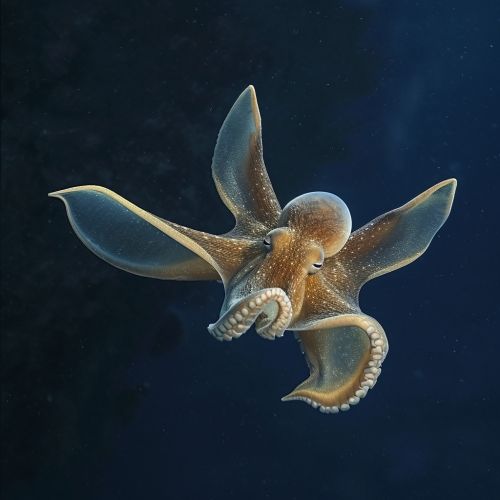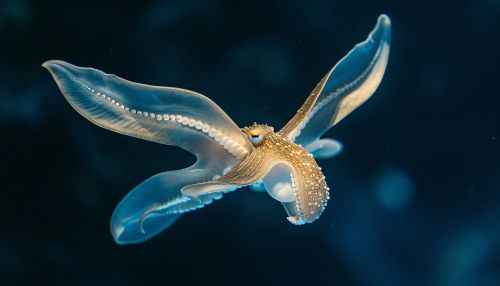Dumbo octopus
Introduction
The Dumbo octopus refers to a group of marine animals classified under the genus Grimpoteuthis. These creatures are part of the larger umbrella of the Octopoda order, which includes all species of octopus. Named for their ear-like fins that resemble the ears of Disney's Dumbo the elephant, these octopuses are known for their unique appearance and deep-sea habitat.
Physical Characteristics
Dumbo octopuses are distinct from their octopus relatives due to several unique physical characteristics. The most obvious of these is the pair of large, ear-like fins protruding from the top of their head, which are used for propulsion in the deep sea. Their bodies are typically bell-shaped, and they can vary greatly in size, with some species measuring just a few centimeters in length, while others can reach up to 1.8 meters.


The skin of the Dumbo octopus is often a pale, translucent color, although it can also be red, pink, brown, or white. This coloration can change depending on the octopus's environment and emotional state, a phenomenon known as chromatophore activity. Their eight arms are connected by a web of skin, which can be spread wide to create a parachute-like effect when swimming.
Habitat and Distribution
Dumbo octopuses are found in oceans worldwide, but they are most commonly found in the deep waters of the Pacific Ocean. They inhabit depths ranging from 400 to 4,800 meters, making them one of the deepest living genera of octopuses. Their habitat is characterized by cold temperatures, high pressure, and complete darkness, conditions that have led to their unique adaptations.
Behavior and Diet
Dumbo octopuses are solitary creatures, spending most of their lives alone in the deep sea. They are not aggressive and tend to avoid confrontation with other creatures. Their diet primarily consists of crustaceans, bivalves, worms, and copepods. They use their arms to capture prey, and their beak-like mouth to break open hard shells.
Reproduction
Unlike many other octopus species, Dumbo octopuses do not have a specific breeding season. Females carry several batches of eggs in different stages of development at any given time. Once the eggs are fertilized, the female attaches them to the underside of rocks or other hard surfaces. The eggs take several months to hatch, during which time the female guards them.
Conservation Status
The conservation status of the Dumbo octopus is currently unknown due to the difficulty of studying these creatures in their deep-sea habitat. However, they are not currently considered to be under threat. The primary potential threats to their population include deep-sea mining and the effects of climate change on ocean temperatures and acidity levels.
